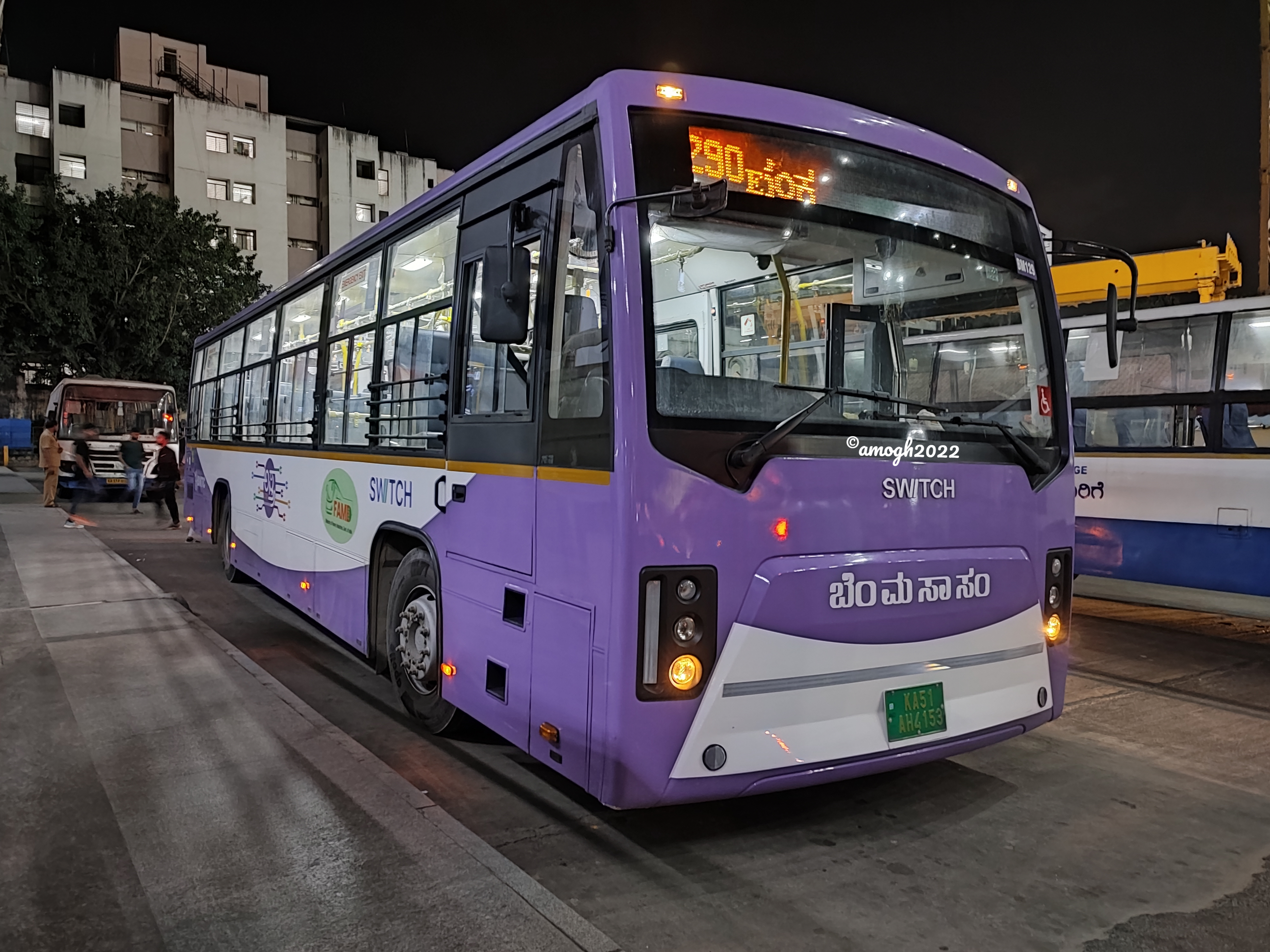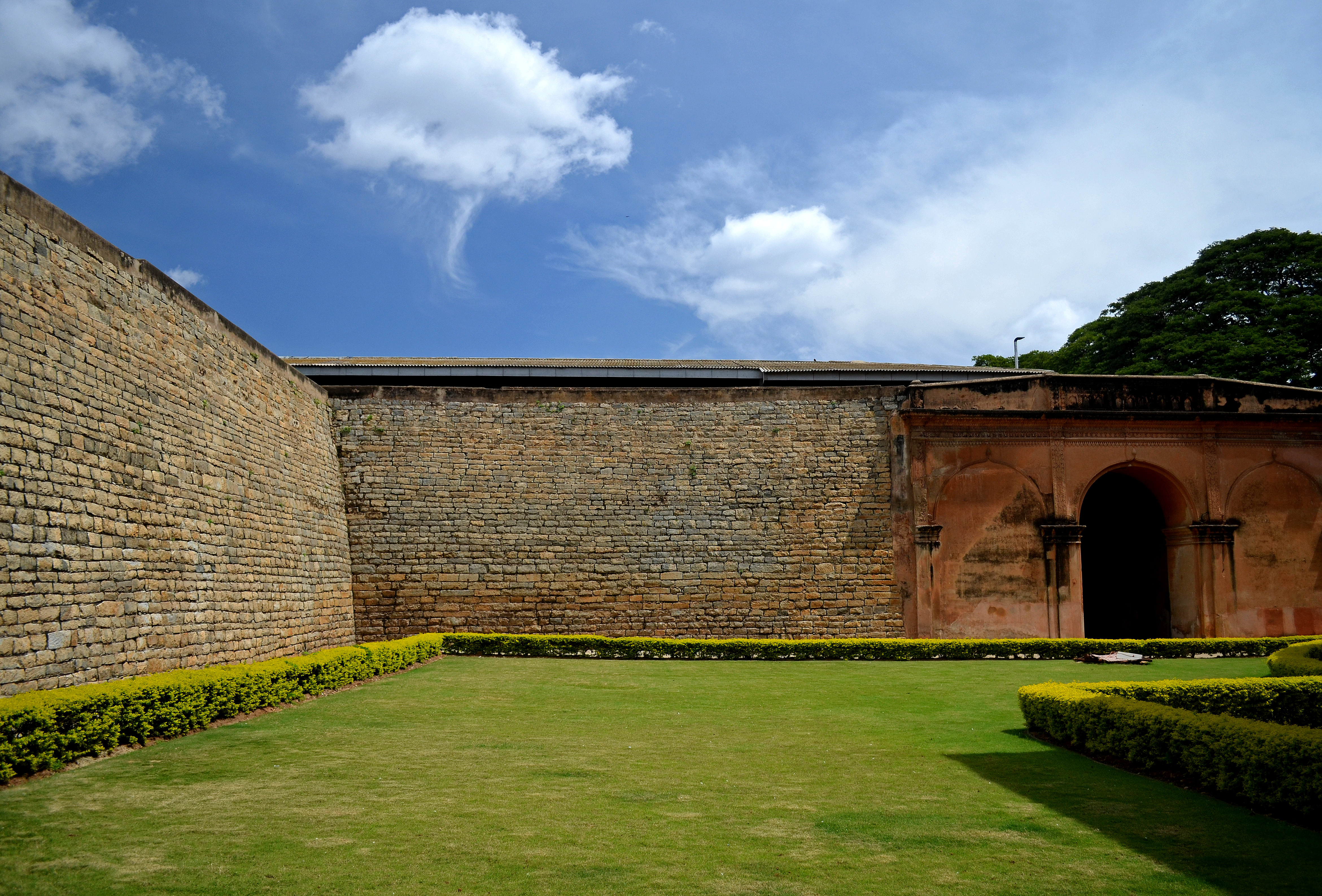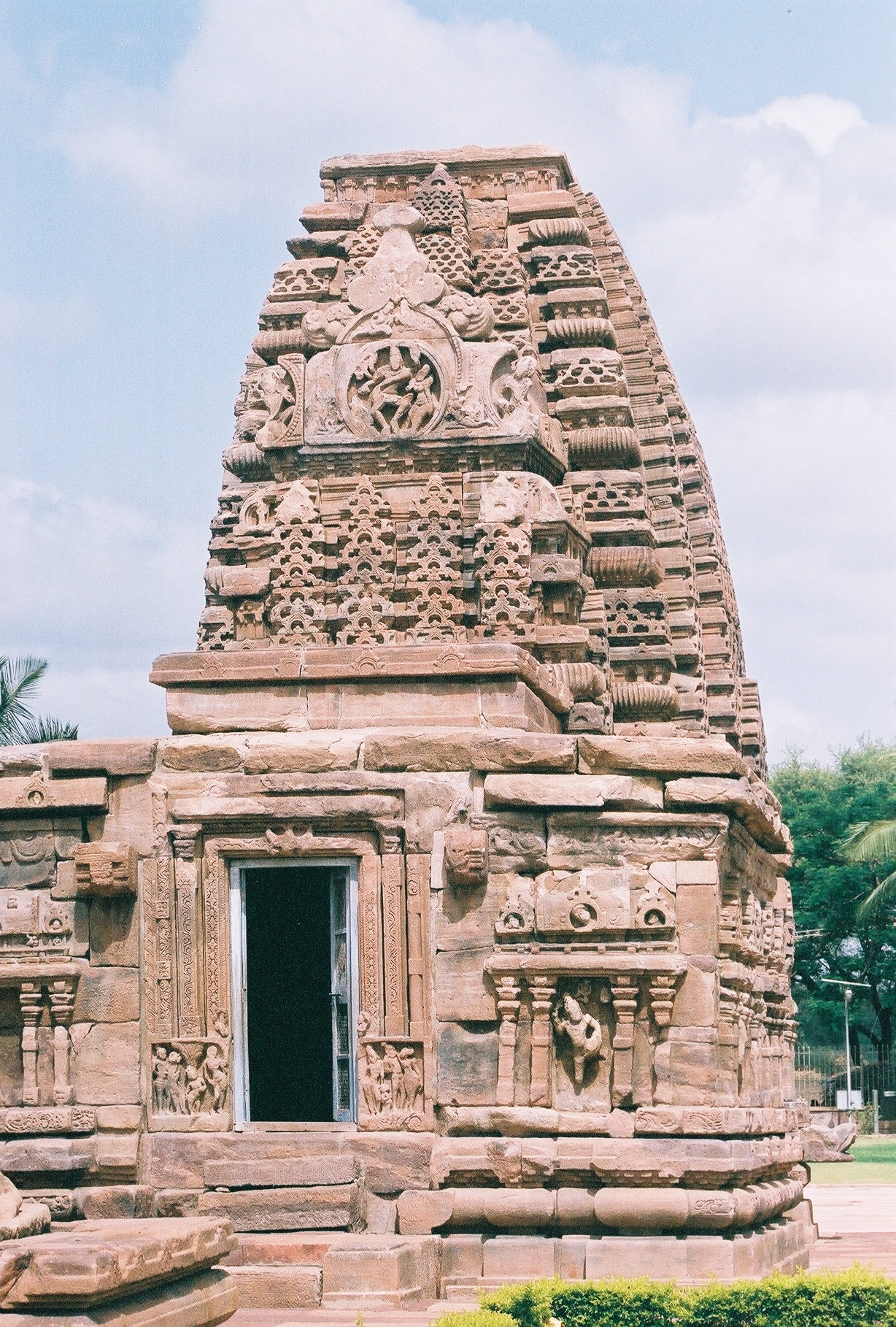|
Hebbal, Bengaluru
Hebbal is a neighbourhood in Bengaluru, Karnataka, India, which was once indicative of the north endpoint of the city. Though originally famous for Hebbal Lake, it is now better known for the serpentine maze of flyovers that network the Outer Ring Road and Airport Road on NH 44. The flyover spans a length of over all the loops combined. The flyover was built by Gammon India. The lake area in Hebbal is well known for its picnic spots, a well-maintained park, boating facilities and the birdwatching opportunities. Hebbal used to be the end of the municipal corporation limits. One can still see the milestone between the Baptist hospital and checkpost. Bengaluru has now grown quite a bit towards north, beyond these marks. L&T factory, which was established in the 1970s, is also close to Hebbal. GKVK University and Manyata Tech Park with a number of office buildings and commercial enterprises makes Hebbal an attractive investment spot. History Historians have suggested ... [...More Info...] [...Related Items...] OR: [Wikipedia] [Google] [Baidu] |
States And Territories Of India
India is a federalism, federal union comprising 28 federated state, states and 8 union territory, union territories, for a total of 36 subnational entities. The states and union territories are further subdivided into 800 List of districts in India, districts and smaller administrative divisions of India, administrative divisions by the respective subnational government. The states of India are self-governing administrative divisions, each having a State governments of India, state government. The governing powers of the states are shared between the state government and the Government of India, union government. On the other hand, the union territories are directly governed by the union government. History 1876–1919 The British Raj was a very complex political entity consisting of various imperial divisions and states and territories of varying autonomy. At the time of its establishment in 1876, it was made up of 584 princely state, constituent states and the prov ... [...More Info...] [...Related Items...] OR: [Wikipedia] [Google] [Baidu] |
Gandhi Krishi Vigyana Kendra
Gandhi Krishi Vigyana Kendra (GKVK), is one of the campus and administrative headquarters of UAS (University of Agricultural Sciences, Bangalore). It is located in Bengaluru Suburb Yelahanka, Karnataka, India. History Maharani Kempa Nanjammanni Vani Vilasa Sannidhi, the Regent of Mysore, donated 30 acres of land in 1899 for the Experimental Agricultural Station at Hebbal. Dr. Lehmann, a German Scientist, initiated research on soil crop response. In 1906, Dr. Leslie Coleman, a Canadian Entomologist and Mycologist, succeeded Dr. Lehmann. The station expanded to 202 acres, aided by M. Vishveshwaraiah, who established the Mysore Agriculture Residential School in 1913. In 1946, Mr. M.A. Srinivasan, Minister of Agriculture, founded Agriculture College, Hebbal, offering a four-year program affiliated with the University of Mysore. In 1963, the University of Agricultural Sciences (UAS) was established, with 1300 acres granted for the Gandhi Krishi Vigyana Kendra Campus. Dr. K.C. ... [...More Info...] [...Related Items...] OR: [Wikipedia] [Google] [Baidu] |
Shivajinagar, Bangalore
Shivajinagara, previously known as Blackpally and Tasker Town, is a locality in Bangalore, India located in the Central Business District. It was named after the 17th century Maratha Emperor Shivaji, since he spent his childhood days there. Overview It is reported that nearly half of Shivajinagar's residents are muslims, as such during Ramadan, visitors to the area gather to enjoy a wide array of culinary delights and cultural experiences. Large queues of visitors indulging in grill-charred kebabs, fried samosas, and large servings of falooda are seen. Families initiate their fast-breaking rituals with a spread of fresh fruits, dates, and beverages. The street fairs near Russell Market circle offer a rich variety of delicacies, including haleem, mutton Lamb and mutton, collectively sheep meat (or sheepmeat) is one of the most common meats around the world, taken from the domestic sheep, ''Ovis aries'', and generally divided into lamb, from sheep in their first year, hogg ... [...More Info...] [...Related Items...] OR: [Wikipedia] [Google] [Baidu] |
Yeshwanthpur
Yashavantapura (formerly Yeshwanthpur), also known as Yeshvantpur, is a locality in the northwestern part of Bangalore in the Indian state of Karnataka. It is located to the north of Malleshwara and west of Hebbala. The biggest wholesale market for agricultural produce in the city, the Yeshwanthpur APMC Yard, is situated in the locality. The green line of Namma metro passes through Yeshwanthpur metro station and allows connectivity to all the extensions of the city. Etymology Jayachamarajendra Wadiyar's association with Yeshwantrao Ghorpade led to common meetings, usually spent on hunting, and cup of tea in the outskirts of his Bangalore Palace. which was a small village and had the proximity of Mysore sandal soap factory. The conversation went late into nights, which made it difficult to head back to Palace. As a token of friendship. Yeshwantrao Ghorpade, Jayachamarajendra Wodeyar renamed the railway station in the area after the Yeshwantrao Ghorpade. Since, then the area ha ... [...More Info...] [...Related Items...] OR: [Wikipedia] [Google] [Baidu] |
Jakkur Airfield
Jakkur Aerodrome is a Flying School located in Jakkur, a suburb of Bangalore, Karnataka, India. It is the only dedicated general aviation field in Bangalore. The airfield is the site of the Government Flying Training School (GFTS), the only flying school in the state.Patil, Ramu (7 August 2014)"Some Hope Still for Jakkur Flying School" ''The New Indian Express''. Retrieved 8 March 2016. The aerodrome is spread over . The premises include facilities for flight training, area leased to private parties for hangars and maintenance activities and other common facilities (airstrip, fuel station etc.). History The Maharaja of Mysore acquired over of land to build Jakkur Aerodrome, which opened in 1948. The airfield was then transferred to the Government of Karnataka on the condition that the latter would only build a flying school at Jakkur. The Government Flying Training School (GFTS) was established on 26 March 1949. It operated smoothly until 1997, when it faced a shortage of air ... [...More Info...] [...Related Items...] OR: [Wikipedia] [Google] [Baidu] |
Yelahanka
Yelahanka is a premium locality in North Bangalore and also a Taluk of Bangalore Urban district in the Indian state of Karnataka. One of the zones of BBMP. It is the oldest part of present Municipal Bengaluru (Bangalore) city and the northern end of the city. It is Nadaprabhu Kempegowda I, of the Yelahanka Prabhu clans, who laid the foundation of present-day Bengaluru through the creation of a "mud fort town" in 1537 CE. History Yelahanka had been in existence prior to the 12th century. The region was called 'Ilaipakka Naadu' in Tamil during the rule of Cholas. A stone tablet of 1267 A.D found in Doddaballapur mentions Dechi Devarasa, ruling the region with Yelahanka as his capital under the aegis of Hoysala monarch 'Narasimha (Third)'. The founder of Bangalore KempeGowda I, was born in Yelahanka. He was the Chieftain and feudatory of the area during the reign of King Krishna Deva Raya of Vijayanagara. Yelahanka has a history of more than 500 years. Chieftain Kempegowda who ... [...More Info...] [...Related Items...] OR: [Wikipedia] [Google] [Baidu] |
Train Station
A train station, railroad station, or railway station is a railway facility where trains stop to load or unload passengers, freight, or both. It generally consists of at least one platform, one track, and a station building providing such ancillary services as ticket sales, waiting rooms, and baggage/freight service. Stations on a single-track line often have a passing loop to accommodate trains travelling in the opposite direction. Locations at which passengers only occasionally board or leave a train, sometimes consisting of a short platform and a waiting area but sometimes indicated by no more than a sign, are variously referred to as "stops", " flag stops", " halts", or "provisional stopping places". The stations themselves may be at ground level, underground, or elevated. Connections may be available to intersecting rail lines or other transport modes such as buses, trams, or other rapid transit systems. Terminology ''Train station'' is the terminology typic ... [...More Info...] [...Related Items...] OR: [Wikipedia] [Google] [Baidu] |
Bangalore Metropolitan Transport Corporation
Bengaluru Metropolitan Transport Corporation, formerly Bangalore Metropolitan Transport Corporation (BMTC), is a state-owned public road transport corporation in the Indian city of Bangalore. It is wholly owned by the Government of Karnataka. It serves the Bangalore Metropolitan Region. As of 28 September 2024, it has a fleet of 6340 vehicles. History Foundation Mysore Government Road Transport Department was inaugurated on 12 September 1948 with 120 buses. The transport department of The Mysore state administered it until 1961. Corporatization It was subsequently converted into an independent corporation under Section 3 of the Road Transport Corporation Act, 1950 on 1 August 1961, In 1961, after successfully converting into an independent corporation all assets and liabilities of MGRTD were transferred to Mysore State Road Transport Corporation. Merger On 1 October 1961, Bangalore Transport Service was merged with it. Renaming On 1 November 1973, the Mysore state was ren ... [...More Info...] [...Related Items...] OR: [Wikipedia] [Google] [Baidu] |
Kempe Gowda I
Kempe Gowda I (27 June 1510 – 1569) locally venerated as Nadaprabhu Kempe Gowda, or commonly known as Kempe Gowda, was a governor under the Vijayanagara Empire in History of India, early-modern India. He is famous for the development of Bengaluru Pete in the 16th century. Kempegowda erected many Kannada inscriptions across the region. Early life Hiriya Kempe Gowda (Hiriya meaning elder in Kannada) was born in the Yelahanka suburb of Bangalore in the Vokkaliga#Morasu Vokkaliga, Morasu Vokkaliga community to Kempananje Gowda, the ruler of Yelhanka for more than 70 years. The Morasu Vokkaligas were Vijayanagara vassals at Yelahanka. Kempe Gowda, who is reputed to have shown leadership skills during his childhood, was educated for nine years at a gurukula in Aivarukandapura (or Aigondapura), a village near Hesaraghatta Lake, Hesaraghatta. Reign Fourth in succession from Rana Bhairave Gowda, founder of the dynasty of the Avati Nadu and great grandson of Jaya Gowda, a separat ... [...More Info...] [...Related Items...] OR: [Wikipedia] [Google] [Baidu] |
Rashtrakuta Dynasty
The Rashtrakuta Empire was a royal Indian polity ruling large parts of the Indian subcontinent between the 6th and 10th centuries. The earliest known Rashtrakuta inscription is a 7th-century copper plate grant detailing their rule from Manapur, a city in Central or West India. Other ruling Rashtrakuta clans from the same period mentioned in inscriptions were the kings of Achalapur and the rulers of Kannauj. Several controversies exist regarding the origin of these early Rashtrakutas, their native homeland and their language. The Elichpur clan was a feudatory of the Badami Chalukyas, and during the rule of Dantidurga, it overthrew Chalukya Kirtivarman II and went on to build an empire with the Gulbarga region in modern Karnataka as its base. This clan came to be known as the Rashtrakutas of Manyakheta, rising to power in South India in 753 AD. At the same time the Pala dynasty of Bengal and the Prathihara dynasty of Gurjaratra were gaining force in eastern and northwe ... [...More Info...] [...Related Items...] OR: [Wikipedia] [Google] [Baidu] |
Mariamman
Mariamman, often abbreviated to Amman (), is a Hindu Dravidian folk religion List of rain deities, goddess of weather, predominantly venerated in the rural areas of South India. Her festivals are held during the late summer/early autumn season of Ādi throughout Tamil Nadu and the Deccan region, the largest being the ''Ādi Thiruviḻa''. Her worship mainly focuses on bringing rains and curing such serious diseases as cholera, smallpox, and chicken pox. Mariamman is worshipped in accordance with local traditions such as ''Pidari'' or the ''Grāmadevatā, Gramadevatai.'' She is considered as a guardian deity (kaval deivam) by many South Indian village dwellers. She is also the regional form of Hindu goddess Parvati. Her consort is lord Shiva. At samayapuram, she is the sister of Ranganathaswamy. She is also worshipped in Karnataka as Marikambe, who is a manifestation of Adi-Parashakti or Mahadevi. Origin Mariamman's worship originated in the traditions of Dravidian folk reli ... [...More Info...] [...Related Items...] OR: [Wikipedia] [Google] [Baidu] |
Anno Domini
The terms (AD) and before Christ (BC) are used when designating years in the Gregorian calendar, Gregorian and Julian calendar, Julian calendars. The term is Medieval Latin and means "in the year of the Lord" but is often presented using "our Lord" instead of "the Lord", taken from the full original phrase "", which translates to "in the year of our Lord Jesus Christ". The form "BC" is specific to English language, English, and equivalent abbreviations are used in other languages: the Latin (language), Latin form, rarely used in English, is (ACN) or (AC). This calendar era takes as its epoch (date reference), epoch the traditionally reckoned year of the annunciation, conception or Nativity of Jesus, birth of Jesus. Years ''AD'' are counted forward since that epoch and years ''BC'' are counted backward from the epoch. There is no year zero in this scheme; thus the year AD 1 immediately follows the year 1 BC. This dating system was devised in 525 by Dionysius Exiguus but was ... [...More Info...] [...Related Items...] OR: [Wikipedia] [Google] [Baidu] |









